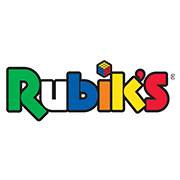Rubik’s
0 reviews
- Listed in David Jones
- 86-108 Castlereagh Street, Sydney, 2000
- 92665544
- https://www.rubiks.com/
The puzzle was invented in 1974 by Hungarian sculptor and professor of architecture Erno Rubik and has become a well loved ‘icon’ recognised around the world.
In recent years the Rubik’s cube has been gaining more and more popularity as it appeals to a new generation and is re-discovered by those who tried to solve it first time around!
National and international ‘speedcubing’ championships have been held regularly since 2003 and the current world record for solving it is less than 10 seconds!!
The original 3×3 cube has led to the creation of many other popular Rubik’s puzzles such as the 2×2 cube, the 4×4 cube, the 5×5 cube, the Rubiks’ 360, the Rubik’s Twist, the Rubik’s Magic, and many more.
The Cube has inspired everything from fashion, architecture and music to films, plays and political speeches.Ernõ Rubik, a professor from Budapest In Hungary, wanted to help his students understand three-dimensional problems. His solution? The Rubik’s Cube!
His solid cube did things that the world hadn’t seen before. It twisted and turned yet it didn’t break. Adding 54 colourful stickers to the six sides gave this amazing puzzle its iconic look. When Ernõ Rubik built his first Cube, it took him over a month to solve it.
At that time, he didn’t know that his “Magic Cube” – “Buvos Kocka” in Hungarian – would take the world by storm.The “Magic Cube” became more and more popular in Hungary during the late 1970s. Ernõ Rubik realised the potential of his invention. But – in communist Hungary in the 1970s, imports and exports were tightly controlled. The answer? Toy fairs!
Its global impact began in 1980 at toy fairs and conferences in London, New York, Paris and Nuremberg. Enthusiastic mathematicians gave the “Magic Cube” its first global stage. Toy specialist Tom Kremer was at the Nuremberg Toy Fair in 1979. He saw the power and potential of the Cube and wanted to sell it to the rest of the world.


